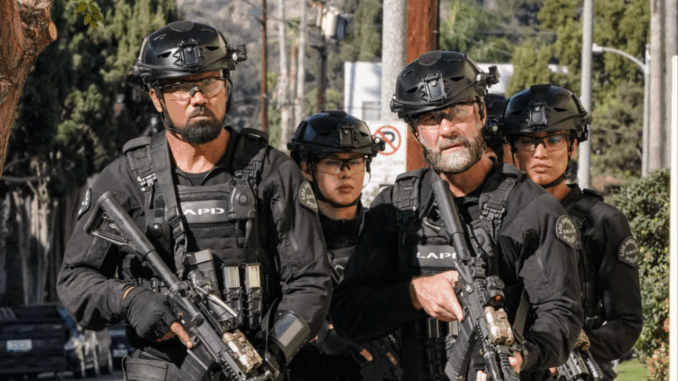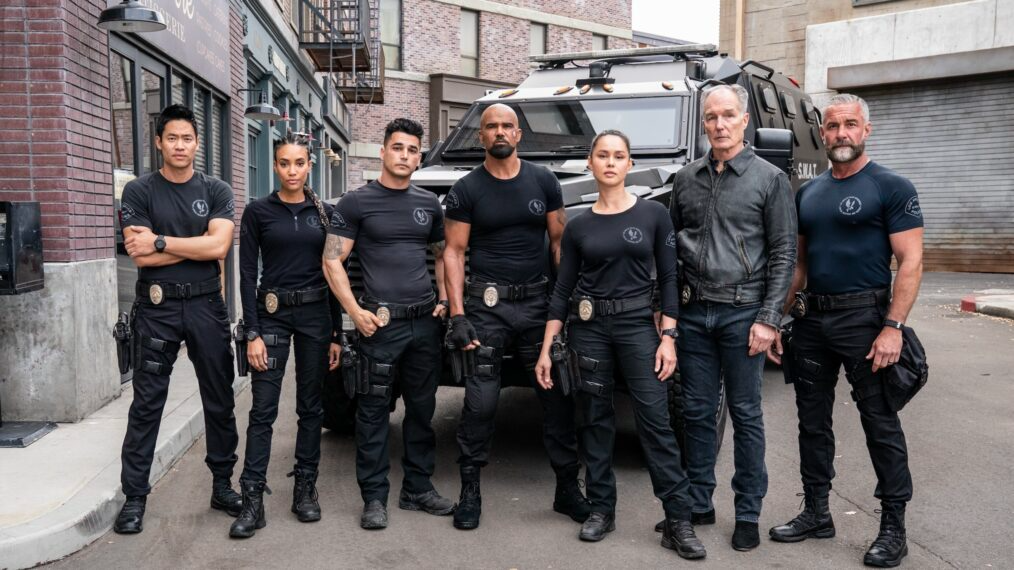
Television dramas often mirror real-life struggles, but few shows have stepped into social commentary as boldly as CBS’s S.W.A.T.. Following the murder of George Floyd and the global protests against systemic racism and police brutality, the show’s cast and creators made a public promise: to “do better.” That promise wasn’t just about entertainment—it was about responsibility.
S.W.A.T. has always carried the weight of depicting law enforcement in Los Angeles, but in the wake of nationwide calls for justice, the team knew it was time to evolve. From exploring race, privilege, and trust in policing to addressing what it means to wear the badge, the show’s vow became more than a press release—it became a mission.
In this article, we’ll explore how S.W.A.T. responded to George Floyd’s death, how the writers and actors shaped the show’s future, and why this shift matters not just for television but for the cultural conversation around justice in America.
The Turning Point: George Floyd’s Death and Its Impact on Television
When George Floyd was murdered in May 2020, the world stopped and demanded answers. Streets filled with protests, and voices demanded systemic change. In Hollywood, writers and producers faced a moral question: Could they keep portraying law enforcement without addressing reality? For S.W.A.T., a show centered on a Black police sergeant leading a tactical unit, the answer was clear—they had to change.
S.W.A.T.’s Promise to ‘Do Better’
The cast, led by Shemar Moore, took to social media to acknowledge the show’s role in shaping public perception of police. They admitted they hadn’t done enough and promised to shift the narrative. This wasn’t just a PR move—it was an accountability statement, one that fans took seriously.
Why Representation Matters in Police Dramas
For decades, cop shows have leaned into the “heroes in blue” narrative without digging into the complexities of policing. By addressing race and systemic injustice, S.W.A.T. broke the mold. Representation isn’t just about having diverse actors—it’s about telling stories that reflect real struggles, fears, and hopes.
Hondo’s Role as a Black Police Sergeant
Shemar Moore’s character, Daniel “Hondo” Harrelson, sits at the crossroads of race and authority. As a Black man leading a police unit in Los Angeles, Hondo embodies the tension between community trust and law enforcement. In the wake of Floyd’s death, Hondo became a voice for both sides—a reflection of the real-life struggle many officers of color face.
Writers’ Room Evolution: Shaping Authentic Stories
The show’s writers didn’t just add a “special episode” to address the protests. Instead, they infused ongoing storylines with themes of systemic racism, accountability, and the complicated relationship between communities and police. This commitment ensured that the issue wasn’t treated as a one-off event but as a central part of the show’s DNA.
Fans React: Applause and Criticism
Not all viewers welcomed the shift. Some applauded the realism, while others felt uncomfortable seeing their favorite action-packed show reflect painful truths. Yet this division proved that S.W.A.T. was doing its job—starting conversations that matter.
The Balance Between Entertainment and Responsibility
Television is meant to entertain, but S.W.A.T. recognized it couldn’t stay silent about real-world injustice. The challenge was striking a balance: thrilling police action sequences alongside heartfelt explorations of justice, accountability, and humanity.
Hollywood’s History of Policing on Screen
For decades, shows like NYPD Blue, Law & Order, and CSI shaped how the public views police. Often, these shows avoided deep conversations about systemic racism. S.W.A.T. decided to break tradition, putting authenticity above escapism.
The Importance of Shemar Moore’s Leadership
As the face of the show, Shemar Moore played a critical role in guiding the narrative. Offscreen, he spoke openly about being a Black man in Hollywood and the responsibility he felt to use his platform for change. His leadership added weight to the show’s promise.
Exploring Race Beyond the Badge
The show didn’t just address racism in policing; it tackled broader cultural issues like economic inequality, privilege, and community distrust. By broadening the scope, S.W.A.T. avoided being one-dimensional and instead painted a fuller picture of modern America.
Behind the Scenes: Diversity in Production
Change didn’t just happen on-screen. Behind the cameras, the team made efforts to diversify writers, producers, and consultants. This shift ensured authenticity and gave a platform to voices that had been ignored in Hollywood for too long.
Critics Weigh In
Critics praised the show’s courage in tackling hard topics but also warned of the dangers of oversimplification. The key, they argued, was nuance—and S.W.A.T. managed to deliver that without losing its action-thriller roots.
The Cultural Impact of S.W.A.T.’s Shift
When a primetime network show addresses race and policing, it doesn’t just entertain—it sparks dinner table conversations. By making racism and police reform part of mainstream storytelling, S.W.A.T. contributed to a larger cultural dialogue.
Looking Ahead: The Future of S.W.A.T.
The vow to “do better” wasn’t a one-season gimmick. It became a foundation for how the show would move forward. As America continues to grapple with questions of justice, S.W.A.T. aims to keep telling stories that reflect both the action fans crave and the honesty society needs.
Conclusion
S.W.A.T.’s decision to confront race and policing in the wake of George Floyd’s death wasn’t just bold—it was necessary. By blending entertainment with accountability, the show set a new standard for how police dramas should evolve in today’s world. Television may not fix systemic racism, but it can amplify voices, spark conversations, and remind viewers that behind every badge is a human being navigating a complicated reality.
FAQs
1. Why did S.W.A.T. decide to address George Floyd’s death?
Because the cast and creators recognized their responsibility to reflect real-life issues and influence public perception of policing.
2. How did Shemar Moore influence the show’s shift?
Moore used his platform to advocate for honest storytelling and led the charge for more authentic representation on-screen.
3. Did fans support the show’s new direction?
Reactions were mixed—some praised the realism, while others resisted the shift. Ultimately, it proved the show was sparking meaningful dialogue.
4. How has the writers’ room changed since the protests?
The team added more diverse voices and made systemic issues an ongoing part of storylines, not just one-off plotlines.
5. What impact has S.W.A.T. had on Hollywood’s portrayal of police?
It challenged the “cop hero” stereotype and pushed for nuanced storytelling that acknowledges systemic problems in law enforcement.
Custom Message:
This article was crafted with passion, authenticity, and the goal of sparking real conversations. Thank you for reading and sharing—it means more than you know.

